7 "Hawaiian" Foods No One Eats in Hawaii
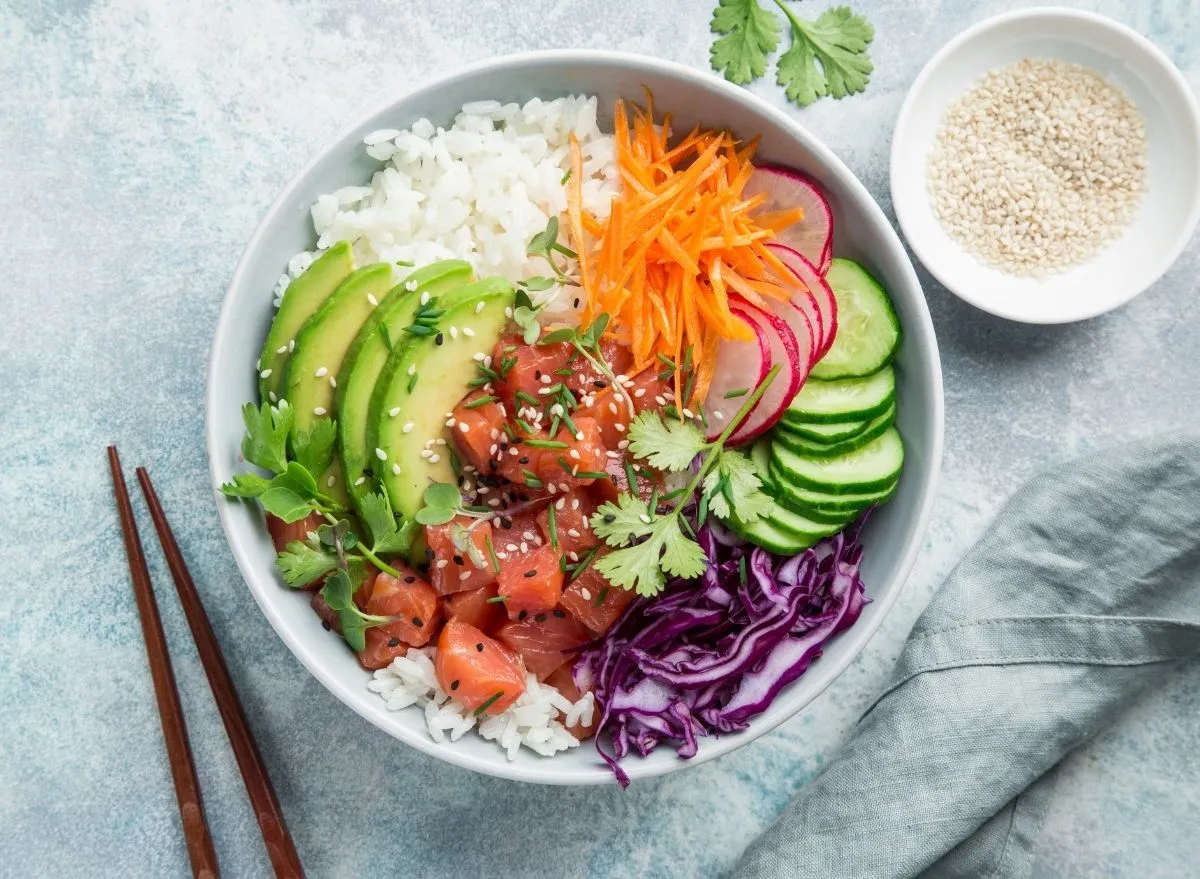
When you think of Hawaii, you probably conjure up images of tropical drinks the color of the sunset with little umbrellas in them. The food is teeming with fish and fresh fruit and there's most likely a pineapple somewhere in the mix. But, if you've been to Hawaii, you probably know that these foods are tourist/commercial versions of island foods, and what the locals eat in Hawaii is very different.
Here are seven stereotypically Hawaiian foods that they don't eat in Hawaii and one that truly is a diet staple. Plus, don't miss 6 "Mexican" Dishes No One Eats in Mexico.
Pineapple on everything
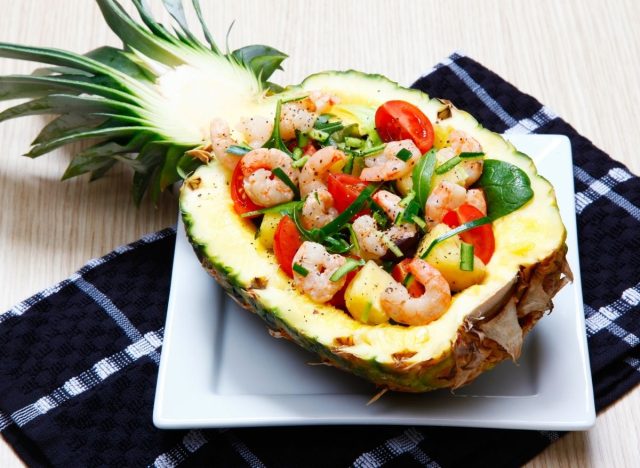
It's a common misconception that most of the world's pineapple comes from Hawaii. In fact, only 0.13% of the world's pineapples are grown there. At one time, a good portion of the world's canned pineapple came from Hawaii.
However, today, most of the fresh pineapples sold in the world are grown in Latin America, with Costa Rica producing the lion's share at 84%. It has become common practice to toss some pineapple on food and brand it Hawaiian. Which brings us to our next food…
Hawaiian pizza
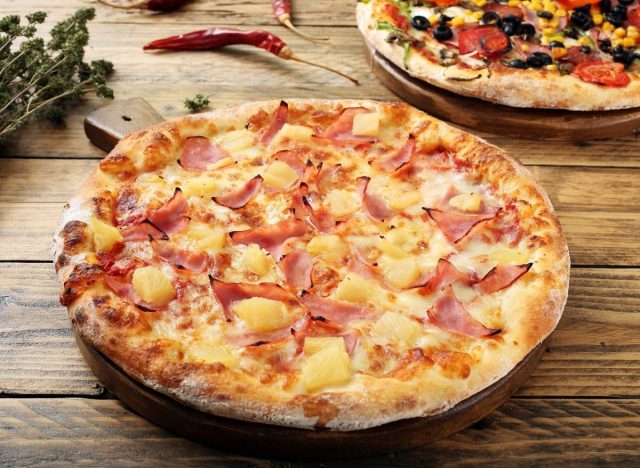
This pineapple and ham-topped pie is not actually from Hawaii, it was created in Canada by a Greek immigrant, reports Mashable. Hawaiian pizza was the brainchild of Sotirios Panopoulos, who thought customers would love a unique salty/sweet combination to top pizza. He tossed pineapple and salty meat, most likely Canadian bacon, on a pie and called it Hawaiian, naming it after the brand of canned pineapple that he used. And thus was born the most disputed type of pizza in the world.
Poke
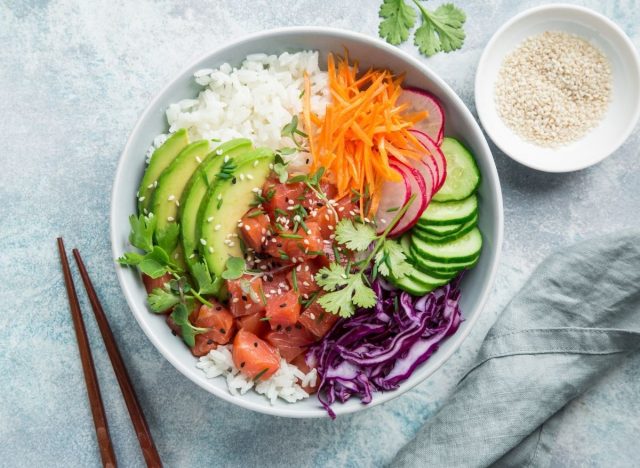
While the origin of this simple chopped fish dish is 100% Hawaiian, the locals would not like the versions that mainlanders Instagram. According to The Washington Post, most native Hawaiians would balk at the trendy things mainlanders add including corn, kale, and bright toppings like watermelon radishes. In Hawaii, they refer to these colorful concoctions as "mainland poke." Hawaiian poke is much simpler and often scooped casually into plastic deli containers. Colorful fish like ahi tuna and salmon are also not authentic as these fish have to be imported to Hawaii.
King's Hawaiian Bread
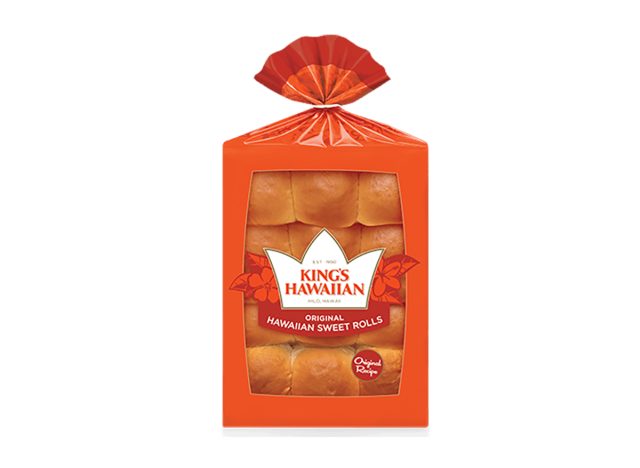
King's Hawaiian is currently a Los Angeles-based bakery known for its sweet bread, which was actually a take on a Portuguese sweet bread called pao doce. The original bakery was founded in Hilo, Hawaii, in the late 1950s, so it does have tropical roots, but the bread became so popular that it was moved to California and the Hawaiian bakery closed in 1992. In late 2020, a suit was actually filed that alleged that the company was trying to mislead consumers by suggesting that the sweet rolls are from Hawaii when they are not.
Hawaiian Punch
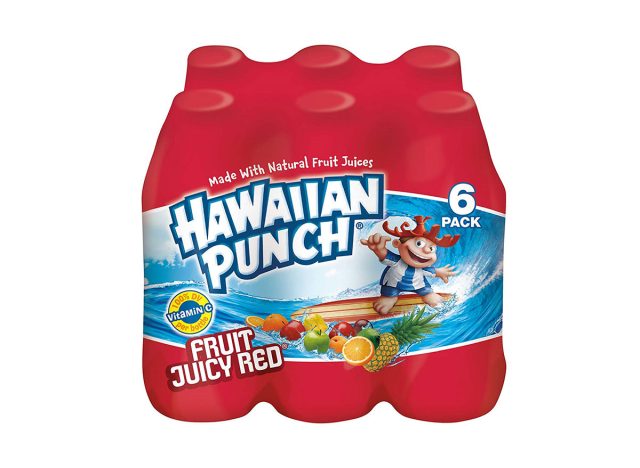
Hawaiian punch, a deep red drink marketed to kids which includes various tropical juices and a heavy dose of corn syrup, was as ubiquitous as Kool-Aid in the 80s. Punchy, the happy little surfer cartoon, helped sell this tropical beverage. But if you think that Hawaiian Punch has tropical roots, you'd be sort of wrong.
In 1934, A.W. Leo, Tom Yates, and Ralph Harrison developed the first Hawaiian Punch recipe in a garage in California. And, the goal was not a drink, but a tropical syrup for ice cream. "Leo's Hawaiian Punch," as the syrup was originally called, was sold to restaurants and ice cream stores, who realized it made a great beverage if mixed with water. It eventually lost the "Leo's" becoming the tropical drink of today.
As for the Hawaiian association, the main ingredients were originally shipped from Hawaii, which is how the drink got its name. No word on whether the Dr Pepper Snapple Group, which now owns the drink, still ships from Hawaii today.
Mai Tais
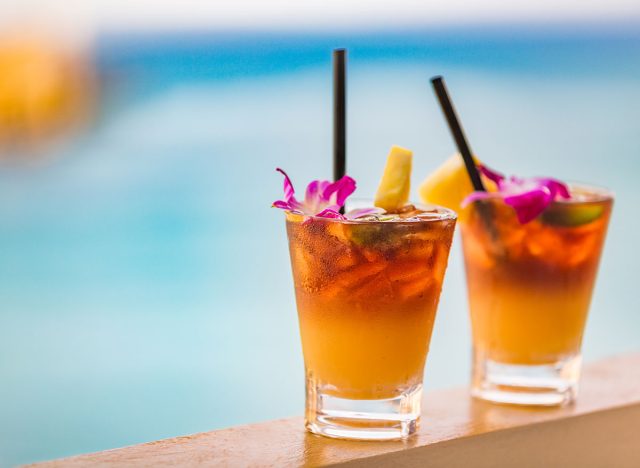
The original Mai Tai was born in 1944, in Oakland, California. Legend has it that tiki bar-owner nicknamed Trader Vic, tossed aged rum, lime, orgeat syrup, and orange Curaçao over ice and served it to his Tahitian customers. As the tale goes, one exclaimed: "Mai Tai-Roa Aé," which means "out of this world" in Tahitian. Trader Vic introduced the Mai Tai to the Hawaiian Islands during his travels where the drink evolved to include orange and pineapple juice. This variation is actually called the Royal Hawaiian Mai Tai but it has gradually become the more popular version with tourists because it's sweeter and resembles a Hawaiian sunset.
Pina Coladas
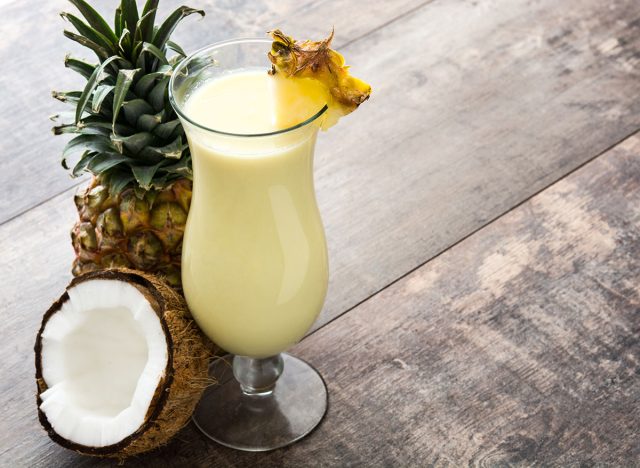
While many people associate this tropical drink with Hawaii, the sweet mix of coconut cream, pineapple juice, white rum, and ice was born in San Juan, Puerto Rico, though the identity of its creator is still an unresolved controversy on the island. Three different bartenders claim the invention as their own. Many tropical drinks are automatically associated with Hawaii, especially if they include pineapple.
SPAM
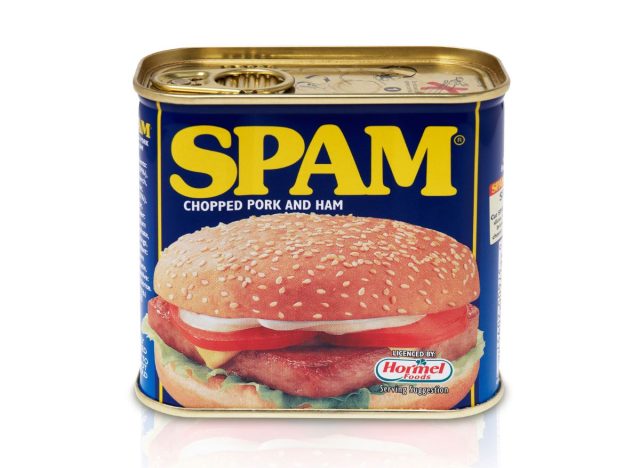
SPAM is actually wildly popular in Hawaii, but that wasn't always the case. During World War II, when meat was scarce and troops were all over the islands because of the military base at Pearl Harbor, the shelf-stable meat was shipped in large quantities to the island. So much SPAM was shipped that when the war ended the cans ended up being sold in local stores and the canned meat was adopted by the locals. According to Live Your Aloha, 6 million cans of SPAM are now consumed each year in Hawaii, which comes out to five cans per person.
A previous version of this article was originally published on Feb 18, 2022.









